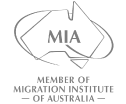For skilled professionals navigating Australia’s General Skilled Migration program, understanding citizenship eligibility represents the culmination of a strategic migration journey. Australia’s citizenship framework intertwines residency obligations, character assessments, and civic integration measures that skilled visa holders must meticulously plan to satisfy. With permanent residency serving as the gateway to citizenship, professionals on Subclass 189, 190, or 491 visas need to align their settlement patterns with the evolving requirements of the Australian Citizenship Act 2007. This guide examines how skilled migrants can optimize their path from provisional residency to full citizenship while avoiding common pitfalls in the naturalization process.
Foundational Pathways: Skilled Visas as Citizenship Springboards
The General Skilled Migration Architecture
Australia’s General Skilled Migration program provides three primary pathways for qualified professionals:
- Skilled Independent Visa (Subclass 189)
A points-tested permanent visa requiring nomination of an occupation on the Medium and Long-term Strategic Skills List (MLTSSL). Applicants must score minimum 65 points through age, English proficiency (competent level), and skilled employment metrics[9][10]. - Skilled Nominated Visa (Subclass 190)
State-sponsored permanent residency requiring occupation alignment with regional skill shortages. Successful applicants commit to two years’ residence in their nominating state while building toward citizenship eligibility[11]. - Skilled Work Regional Visa (Subclass 491)
Provisional five-year visa offering pathway to permanent residency through three years’ regional residence. Ideal for professionals willing to contribute to regional development before transitioning to citizenship[12].
Strategic Visa Selection for Citizenship Planning
- Subclass 189 holders can immediately begin accruing permanent residency time toward citizenship
- Subclass 190 recipients must factor state nomination commitments into residence planning
- Subclass 491 applicants should coordinate provisional visa timelines with eventual permanent residency application dates
“Skilled migration isn’t just about entering Australia—it’s about strategically positioning yourself for full societal integration,” notes migration expert Dr. Helena Ng8.
Core Citizenship Eligibility Framework
Residency Requirements: Chronometry of Commitment
The four-year residency rule forms the temporal backbone of citizenship eligibility14:
| Residency Component | Requirement |
|---|---|
| Lawful Stay | 4 continuous years immediately pre-application |
| Permanent Residency | Minimum 365 days as PR |
| Absences | ≤12 months total in 4 years ≤90 days in final year |
Case Study: Software engineer Mariana (Subclass 189 holder)
- Landed Australia: 1 Jan 2023 (temporary resident)
- PR granted: 1 July 2024
- Eligible for citizenship: 1 July 2026 (1 year PR + 3.5 years temp residency)
- Must maintain ≤90 days overseas between 1 July 2025-2026
Character Assessment: Beyond Criminal Records
The good character requirement extends beyond criminal checks to evaluate:
- Tax compliance history
- Workplace relations conduct
- Community integration efforts
- Financial probity indicators
Migration lawyer David Chen warns: “Even a single late tax payment can trigger additional scrutiny during citizenship assessment. Maintain immaculate compliance records from visa application through naturalization.”
Language and Civic Integration Mandates
Applicants under 60 must demonstrate competent English through either:
- IELTS 6.0 equivalent test score
- Citizenship test completion in English5
The citizenship test itself evaluates:
- Australian values (democracy, rule of law, equality)
- Parliamentary system knowledge
- Indigenous heritage recognition
- National symbols understanding
Test Preparation Tip: Utilize the official Australian Citizenship: Our Common Bond study guide, with particular focus on the values section introduced in 2023 reforms[5].
Optimizing the Application Process
Document Stratification Approach
Successful applicants organize evidence into three tiers:
Tier 1: Mandatory Documents
- Passport bio pages
- Permanent residency grant notice
- Residence calculator printout
Tier 2: Character Reinforcement
- Police clearances (Australian + overseas)
- Employment references
- Community service records
Tier 3: Contingency Materials
- Rental agreements proving continuous residence
- School enrollment records for dependent children
- Medical exemption certificates (if applicable)
Fee Structure Optimization (2024-25)
Understanding the revised fee schedule can yield significant savings:
| Application Type | Standard Fee | Concession Eligibility |
|---|---|---|
| Conferral (Form 1300t) | $560 | Pensioner Concession Card holders |
| Conferral (Other) | $345 | – |
| Descent (Form 118) | $360 | – |
Pro Tip: Families applying together can save $450 by including children under 16 on parental applications[14].
Processing Timeline Management
Latest processing data reveals stratified timelines:
| Application Complexity | Processing Window |
|---|---|
| Straightforward cases | 6-9 months |
| Overseas police checks required | 8-12 months |
| Character review needed | 12-18 months |
Acceleration Strategy: Submit complete Form 1300t with pre-emptive overseas police certificates to avoid processing delays.
Dual Citizenship Dynamics
Australia’s dual citizenship provisions allow skilled migrants to maintain original nationality while enjoying:
- Visa-free entry to 185+ countries through Australian passport
- Political participation rights
- Consular protection overseas
Critical Consideration: Check home country’s dual citizenship rules—nations like China require relinquishment of original citizenship upon naturalization.
Post-Citizenship Horizons
New citizens gain access to:
- Public Office Eligibility: Stand for parliamentary elections
- Security Clearances: Pursue defense/intelligence careers
- Intergenerational Benefits: Automatic citizenship for overseas-born children
Migration analyst Priya Singh notes: “The citizenship certificate isn’t an endpoint—it’s a launchpad for professional opportunities previously restricted to permanent residents.”
Strategic Recommendations
- Residency Buffer: Maintain 120-day residence margin below allowable absence limits
- Character Portfolio: Document volunteer work and community engagement annually
- Test Preparation: Enroll in accredited citizenship test coaching 6 months pre-application
- Fee Planning: Schedule application submissions pre-July to avoid annual CPI increases
By aligning skilled migration strategy with citizenship requirements from the initial visa application, professionals can transform temporary residency into permanent national belonging. The path demands meticulous planning but rewards migrants with full participation in Australia’s democratic and economic future.










